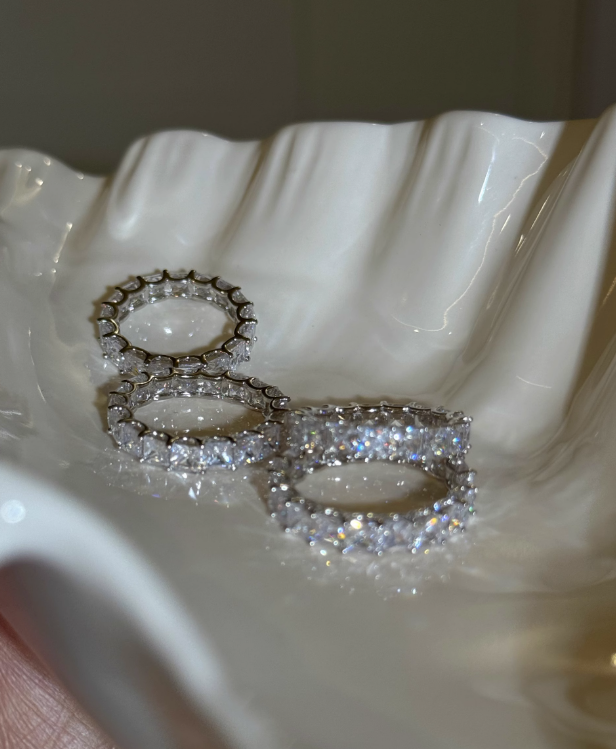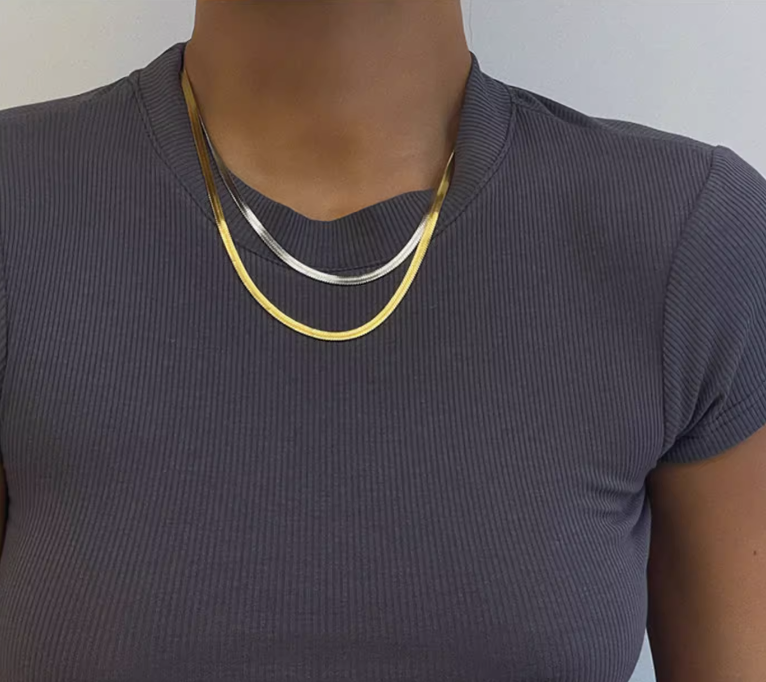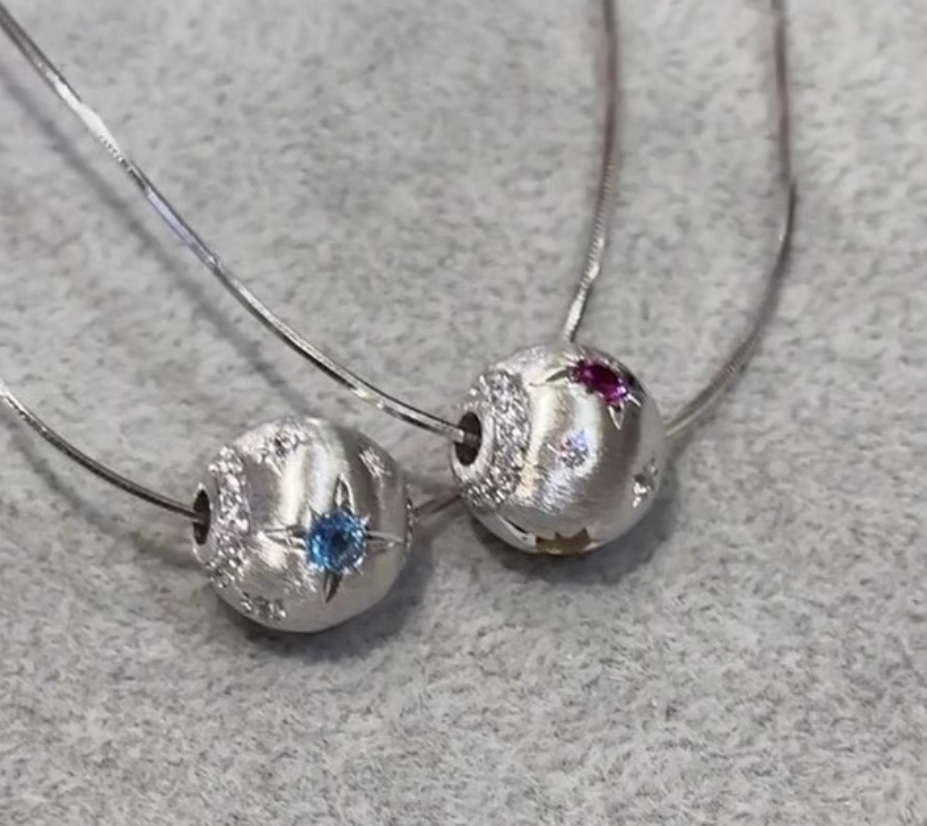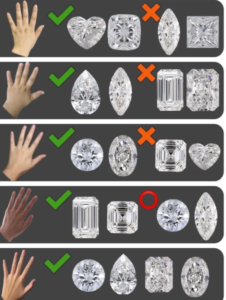Eight principles of accessory matching
- Principle of Quantity
When wearing jewelry, it is advisable to wear less rather than more If multiple types of jewelry need to be worn simultaneously, the upper limit is generally 3 - Land principle
When wearing jewelry, try to choose the same material to match. Can make the jewelry look coordinated and consistent overall, without appearing too cumbersome. - Color principle
When wearing jewelry, try to choose consistent colors. When wearing multiple pieces of jewelry, choose harmonious color tones, detailed color combinations, and maintain consistency in the main color tone. - Body shape principle
When wearing jewelry, the choice of body shape is to make the jewelry play a role in highlighting the strengths and avoiding the weaknesses of the body. - Identity principle
When choosing to wear jewelry, it should be in line with one’s current identity. For example, women in the workplace should choose jewelry that is low-key and simple. For those who participate in events or banquets, you can choose to be more conspicuous. - Seasonal principle
When wearing jewelry, try to choose jewelry that matches the season as much as possible. Gold colored, dark colored jewelry, suitable for wearing in cold seasons. Silver, bright colored jewelry, suitable for warm season wear. - Clothing principles
When wearing jewelry, the choice of jewelry should be coordinated with the clothing. Texture, color, and style should complement each other - Principles of Customs
When wearing jewelry, it is customary to choose jewelry in specific regions and occasions. Different regions and countries wear different accessories, so it is important to understand and respect this.
So how do different types of collars match necklaces?
The length of a choker (collar) is generally between 30-33cm, a short necklace is usually 35-40cm, and when paired with a medium-sized necklace, the length is usually between 43-50cm (below the collarbone). Stacked necklaces can be paired with different lengths to increase the sense of layering, and the most commonly paired length is generally controlled between 30-50 cm.
Long styles are generally less worn and are mainly suitable for high neck styles. The medium to long length is usually 50-60cm (up to the chest), while the long length is usually 71-85cm.
Tips for matching necklaces with different types of collars
You can choose according to the shape and design of the collar, and here are some basic matching principles:
High neck: Suitable for pairing with long necklaces, avoid short necklaces to avoid adding a sense of restraint. A long necklace can elongate the neck line, making the neck appear more slender and elongated.
Square collar: suitable for short necklaces that do not exceed the collar, the pendant should be delicate and delicate to present a V-shaped effect and complement the face shape.
Small round neck: It is not advisable to choose a necklace that is too short to avoid choking. You can choose a round pearl necklace or an exaggerated short necklace to enhance the visual effect of the neckline. Suitable for matching styles with a length of around 40-45cm, slightly longer than the neckline.
Oval neckline: Suitable for wearing short necklaces with a three-dimensional feel, and can also be stacked with short necklaces with thinner chains to fill in the gaps.
Deep V-neck: suitable for long necklaces or Y-shaped necklaces with a drooping feel, avoiding neck space, and can also be used for both short and long items. Suitable for matching with various styles of necklaces, whether it’s long necklaces, short necklaces, or collars, it can add beauty.
Strap: Suitable for pairing with large pendants with thin chains to attract attention.
Suit collar: Suitable for pairing with low-key and understated minimalist necklaces, it can be carried to increase layering.
One character collar/boat collar: suitable for pairing with small and simple necklaces, tightly tied around the neck to avoid excessive decoration. Alternatively, you can choose not to wear a necklace and only highlight the key points through earrings.
Asymmetric: Clothing with asymmetric design already has its own unique visual characteristics, and it is generally not recommended to wear additional necklaces as they can disrupt the overall lines of the clothing and appear cluttered. It can be paired with earrings or bracelets.
Summary of necklace dressing tips
The thinner the top, the thinner the necklace
The thicker the top, the thicker the necklace
The smaller the collar, the longer the necklace
The larger the collar, the shorter the necklace
The richer the collar, the simpler the necklace
The simpler the collar, the richer the necklace
Round neck mouth matching – V-shaped necklace
V-neck matching – circular necklace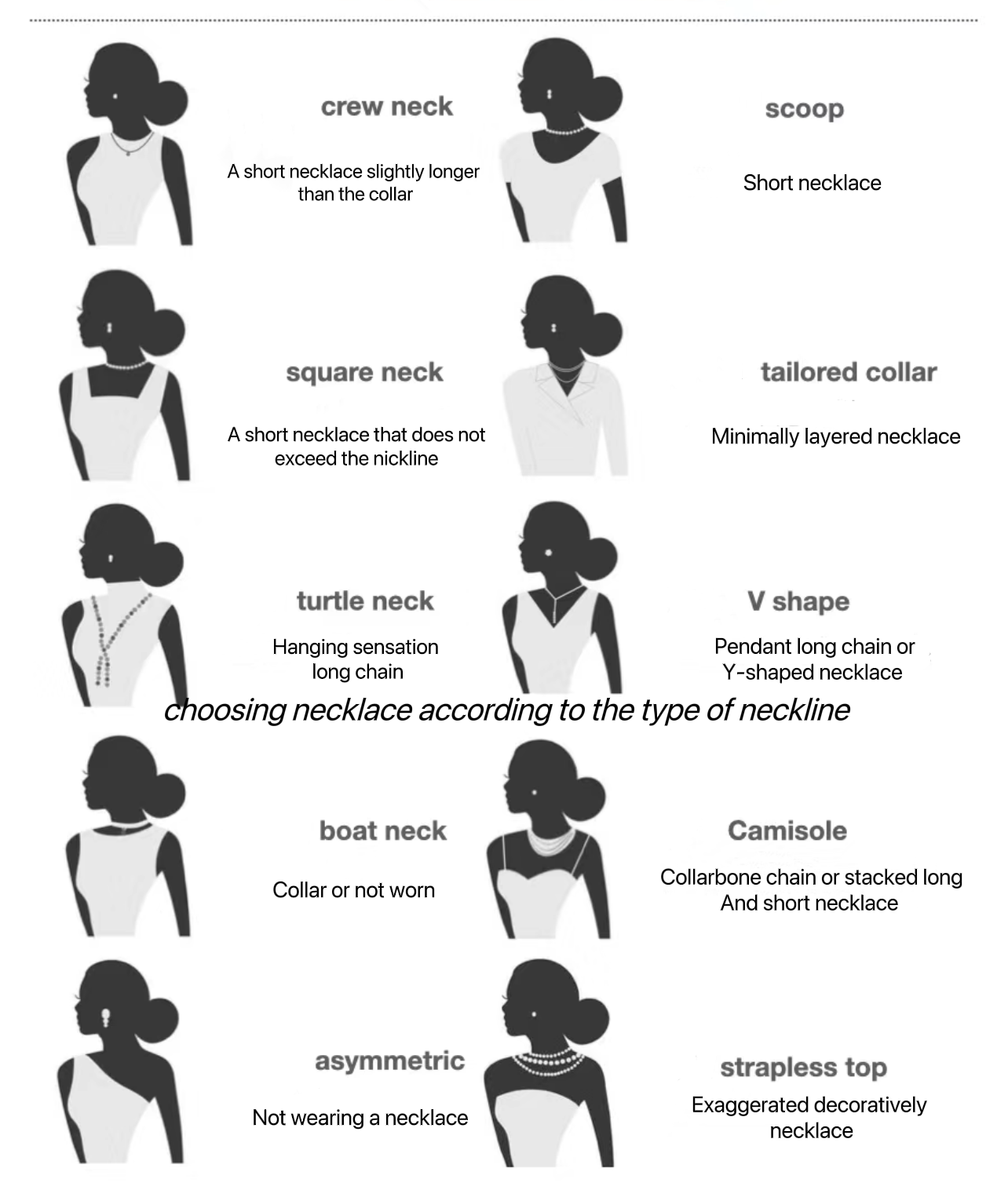
Principles for matching ear accessories
- Don’t choose accessories based on your face shape. Choose small accessories for wide faces and large accessories for long faces
- Choose earrings with soft lines for square faces, such as small hearts, ellipses, etc; Round face with a linear feel and slender earrings; It is best to wear narrow and wide earrings on a triangular face.
- Girls with long hair and a shawl should wear long earrings; Women with short hair wear delicate ears; Those with asymmetrical hairstyles can wear a large earring;
- Choose bright earrings for pale skin; If the skin tone is dark, you can choose silver or silver white earrings; If your skin tone is yellowish, you can choose earrings with a white color scheme.
- Girls who wear glasses or sunglasses should not wear large earrings
- Wear pearl earrings on shirts, tassel earrings on skirts, earrings on suits, metal earrings on jeans or leather jackets, loop earrings on hoodies, silver jewelry on white tops, and gold jewelry on black tops

Ring matching principles
- Wear a dual arm ring on fleshy hands, a curved ring on jointed hands, and an open ring on short and thick hands
Wear two rings, one large and one small, on the same hand, one thick and one thin. Be sure to wear a thin ring if you have a thumb.
Thumb: represents power and confidence, index finger, left hand: represents unmarried, right hand: represents single, middle finger, left hand: represents engagement and love, right hand: a famous flower with a master, ring finger, left hand: represents married, right hand: represents passionate love, small finger, left hand: represents celibacy, right hand: does not want to date
Wearing thin rings on the index and ring fingers, and a knuckle ring on the middle finger, creates a layered design with one front and one back.
Recommended jewelry——unforgetjewelry
Angel Eye ring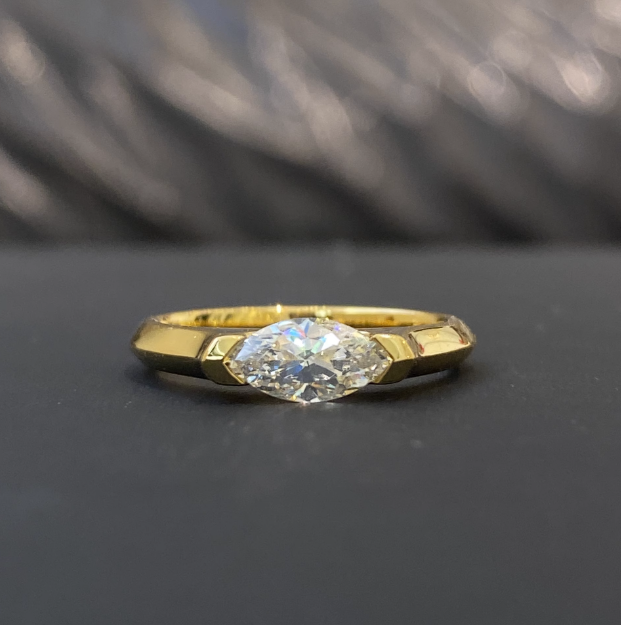 Horus Eye Ring
Horus Eye Ring Planet Ring
Planet Ring 

